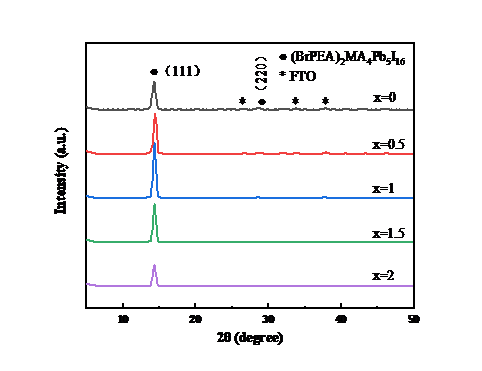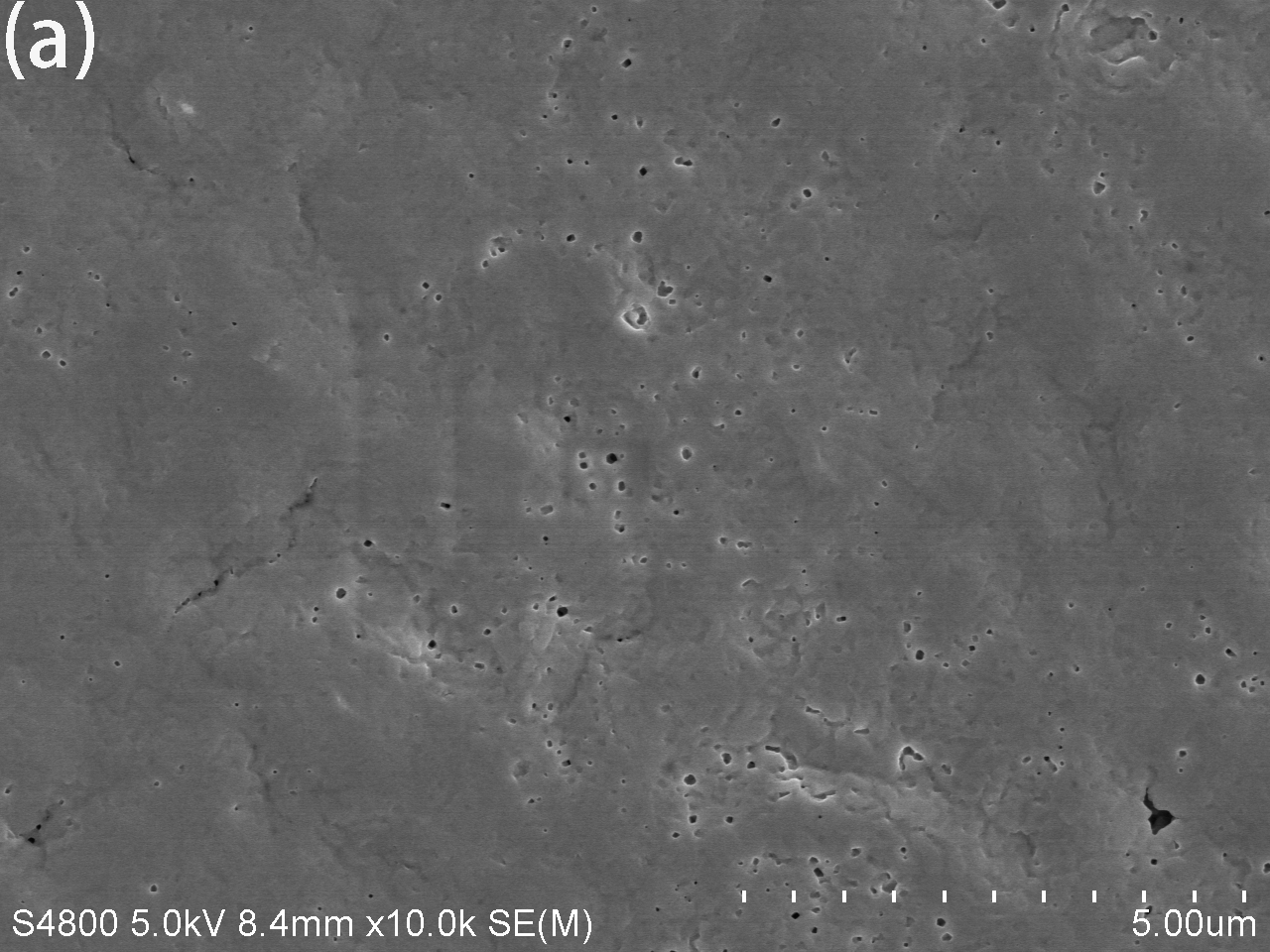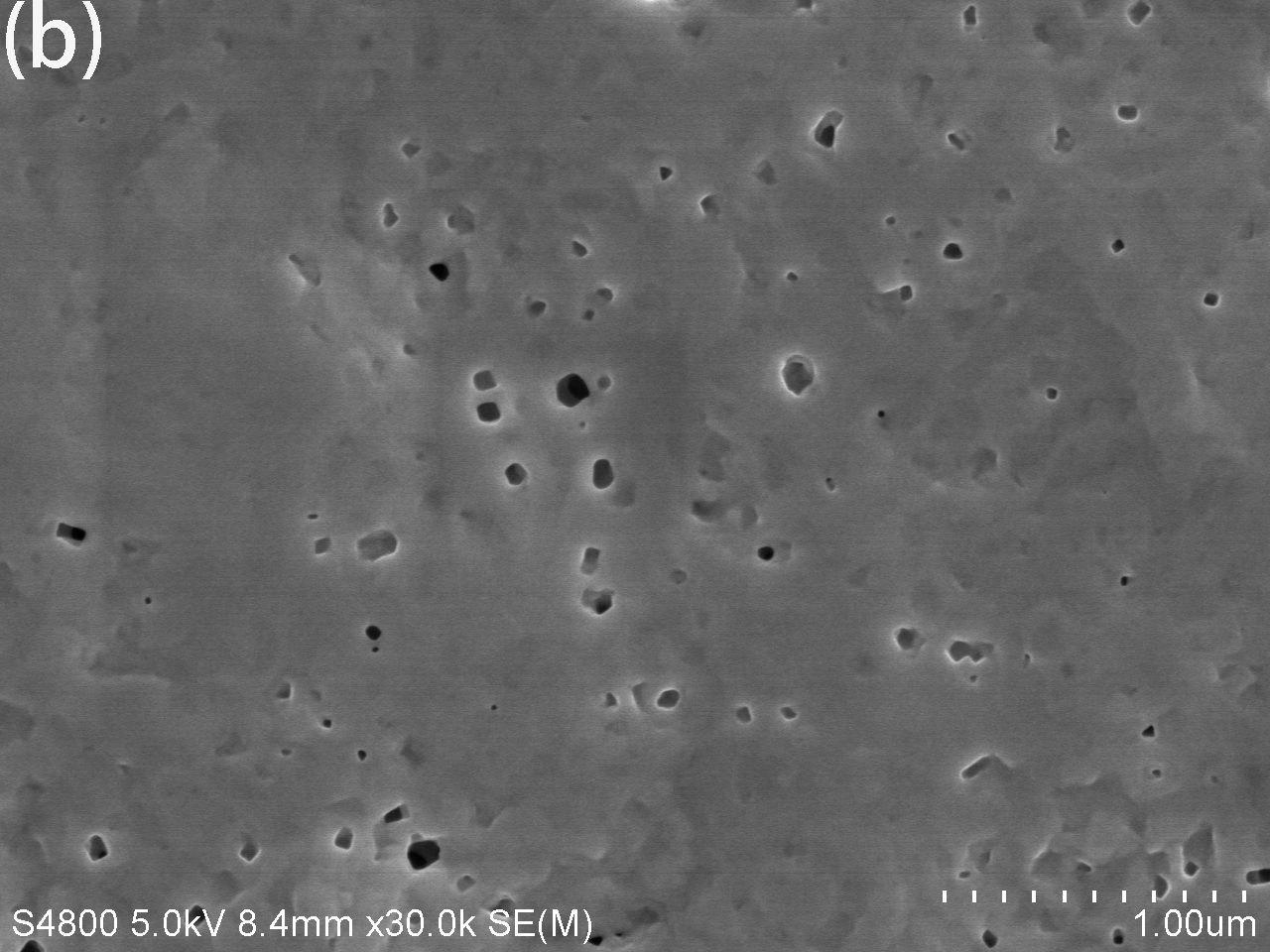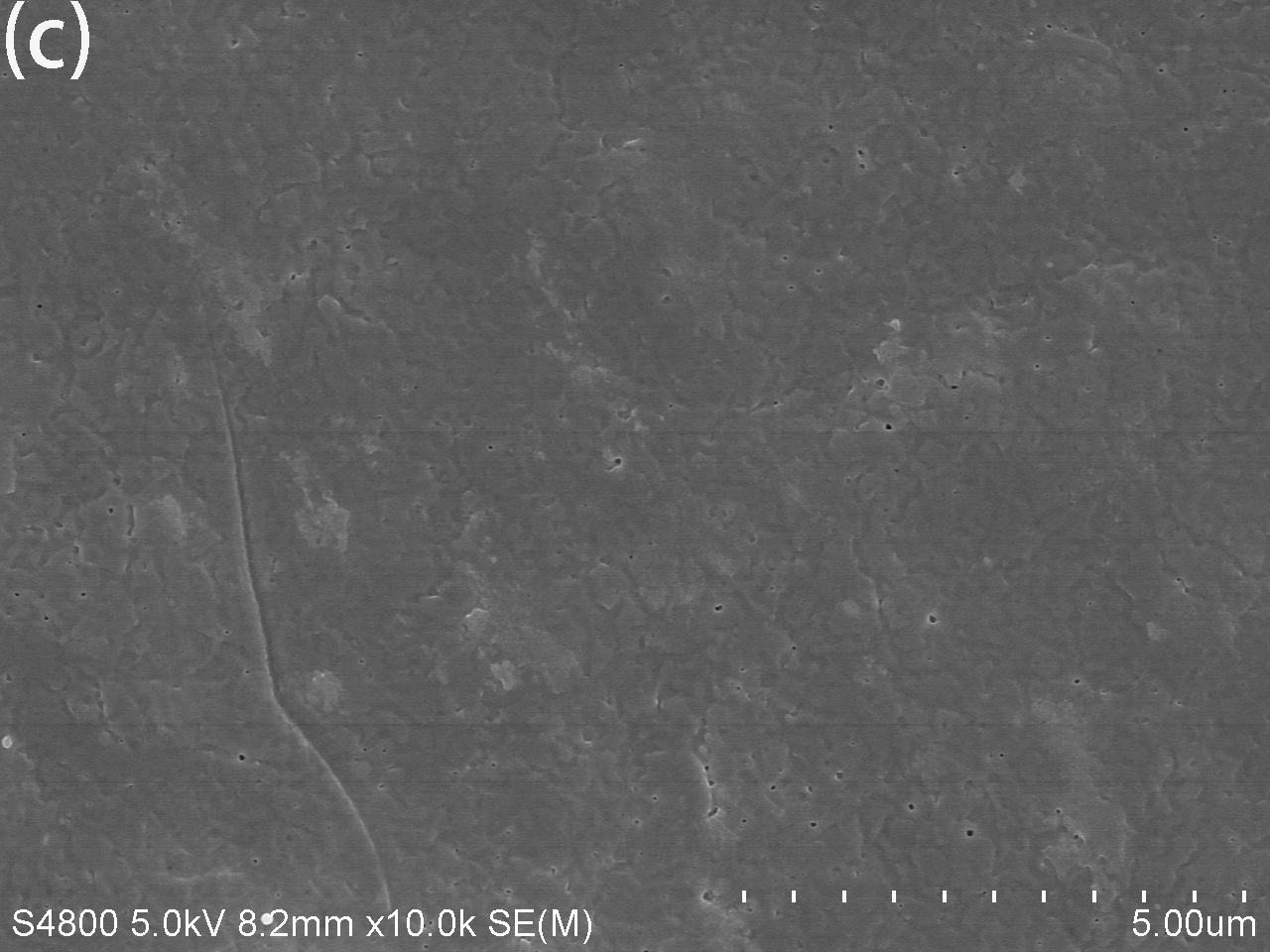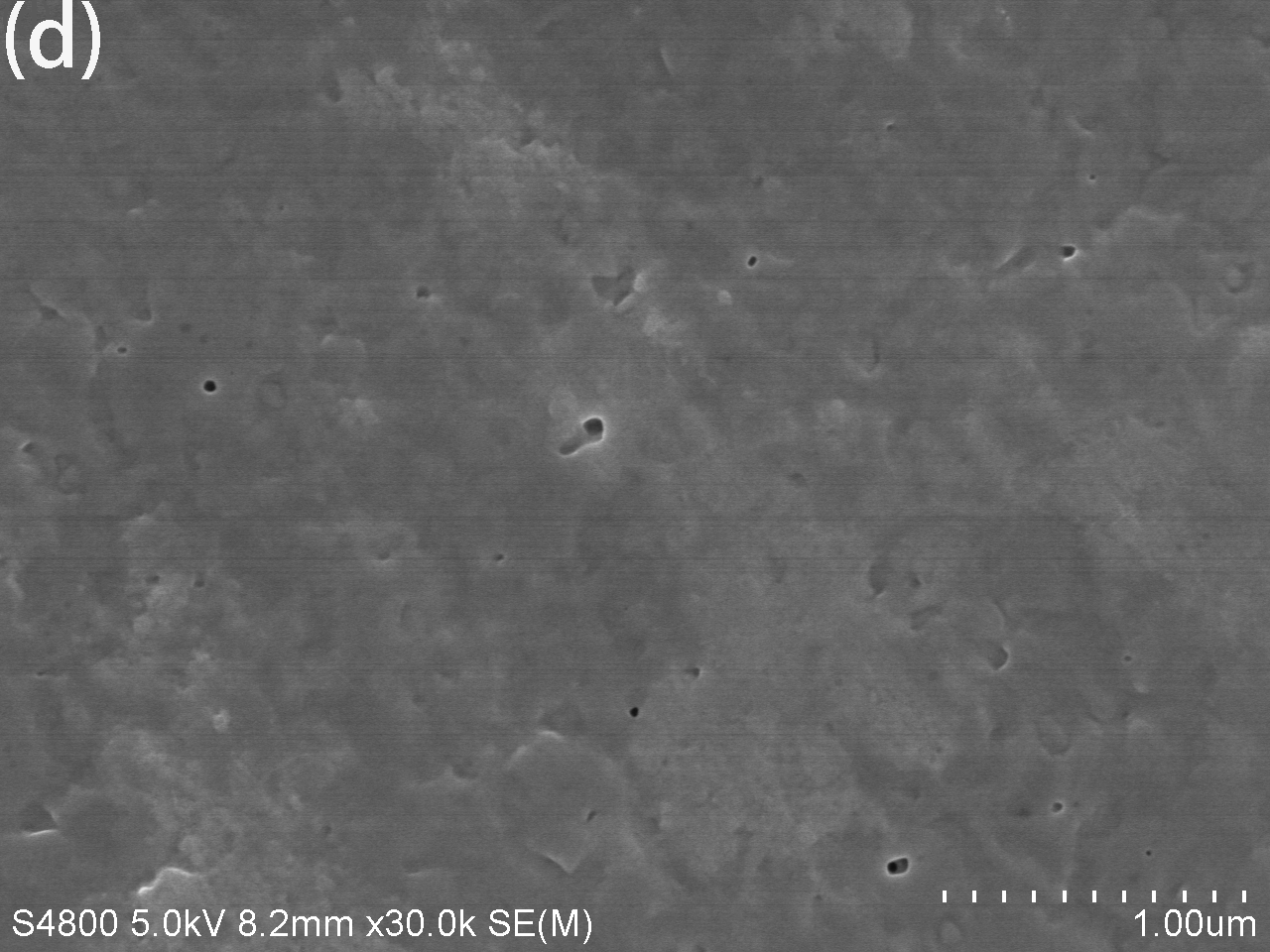(BrC6H4C2H4NH3)2(CH3NH3)n-1PbnI3n 1薄膜的制备及光电转换性能研究毕业论文
2021-12-09 17:36:02
论文总字数:27227字
摘 要
钙钛矿太阳能电池因其光吸收能力强,载流子扩散长度长,电荷传输性能优异等在光伏领域表现优异,目前最高效率已经超过25%。钙钛矿太阳电池多以三维钙钛矿分子杂合物CH3NH3PbI3展开,然而CH3NH3PbI3自身稳定性不佳导致基于其设计的钙钛矿太阳能电池稳定性不足。二维层状钙钛矿太阳能电池在稳定性杂合物材料和组元的选择更加丰富上表现突出,但相对于三维钙钛矿太阳能电池,大部分低维钙钛矿太阳能电池的效率偏低,界内对高效率有机材料二维层状钙钛矿电池的制备及探索仍有很长的路要走。二维钙钛矿作为光电转换材料主要采用C6H5C2H4NH2(PEA)和n-C4H9NH2(n-BA)两种有机体系。
本文采用原位自组装反应法制备新型二维层状钙钛矿(BrC6H4C2H4NH3)2(CH3NH3)n-1PbnI3n 1薄膜(n=5),并组装太阳能电池,探索其在钙钛矿太阳能电池中的应用。采用X射线衍射(XRD),扫描电子显微镜(SEM)以及紫外-可见吸收(UV-Vis)等测试方法对所制备的样品进行表征。通过J-V曲线评价器件的性能。以不同添加剂量MACl、不同退火温度(添加不同摩尔比的MACl和不同退火温度等)为控制变量,分析了不同条件下制备的钙钛矿薄膜的结晶性、表面形貌和吸光度的差异及对二维层状钙钛矿太阳能电池的性能产生的影响。
研究结果表明:不同添加MACl摩尔比和不同退火温度下下制备的(BrC6H4C2H4NH3)2(CH3NH3)4Pb5I16钙钛矿薄膜的结晶性和表面形貌差异较大。选用N,N-二甲基甲酰胺(DMF)为溶剂,添加MACl摩尔比为1时薄膜的结晶性和覆盖率较好,对光的吸收也最强,光电转换效率可达6.08%,短路电流密度(Jsc)为16.34 mA/cm2,开路电压(Voc)为828 mV,填充因子(FF)为0.449
本文的特色:本文研究了新型二维钙钛矿光电转换材料的制备及其在太阳能电池中的应用,对二维钙钛矿作为光电转换材料的太阳电池的知识体系及实用化有意义。
关键词:二维钙钛矿太阳能电池;一步法;MACl;光电转换效率
Abstract
Perovskite solar cells perform well in the photovoltaic field due to their strong light absorption capacity, long carrier diffusion length and excellent charge transfer performance. Currently, the highest efficiency has exceeded 25%.Perovskite solar cells are mostly developed as three-dimensional perovskite molecular hybrid CH3NH3PbI3. However, the poor stability of CH3NH3PbI3 leads to the poor stability of perovskite solar cells based on its design.Two-dimensional layered perovskite stability of solar cells in hybrid materials and components on the choice of more rich, but relative to the three dimensional perovskite solar cells, and most of the low dimensional perovskite the efficiency of solar cells on the low side, limits on high efficiency organic material preparation of two-dimensional layered perovskite battery and exploration is still a long way to go.Two organic systems, C6H5C2H4NH2(PEA) and n-C4H9NH2 (n-BA), are mainly used as two-dimensional perovskite as photoelectric conversion materials.
In this paper, a novel two-dimensional layered perovskite (BrC6H4C2H4NH3)2(CH3NH3) n-1PbnI3n 1 thin film (n=5) was prepared by in-situ self-assembly reaction method, and its application in perovskite solar cells was explored.The samples were characterized by X - ray diffraction (XRD), scanning electron microscopy (SEM) and ultraviolet - visible absorption (uv-vis).The performance of the device was evaluated by j-v curve.With MACl of different dosage and annealing temperature (MACl with different molar ratio and annealing temperature) as control variables, the differences in crystallinity, surface morphology and absorbance of perovskite thin films prepared under different conditions and the effects on the performance of two-dimensional layered perovskite solar cells were analyzed.
The results showed that the crystallinity and surface morphology of the (BrC6H4C2H4NH3)2(CH3NH3)4Pb5I16 perovskite films were different at different molar ratios of MACl and different annealing temperatures.When N and n-dimethyl formamide (DMF) were used as solvent, the film had better crystallinity and coverage, and the highest absorption to light. The photoelectric conversion efficiency was up to 6.08%, the short-circuit current density (Jsc) was 16.34ma /cm2, the open-circuit voltage (Voc) was 828mv, and the filling factor (FF) was 0.449
Characteristics of this paper: this paper studies the preparation of a new two-dimensional perovskite photoelectric conversion material and its application in solar cells, which is of great significance to the knowledge system and practical application of two-dimensional perovskite as a photoelectric conversion material for solar cells.
Key Words:Two-dimensional perovskite solar cell;One-step method;MACl;Photoelectric conversion efficiency
目 录
第1章 绪论 1
1.1 引言 1
1.2 钙钛矿太阳能电池的光电转换材料分类与结构 2
1.2.1 钙钛矿材料的结构 2
1.2.2 钙钛矿材料的稳定性 4
1.2.3 钙钛矿太阳能电池的结构及组成材料 5
1.3 二维钙钛矿太阳能电池的研究现状 6
1.4 本文的研究思路和研究方案与技术路线 7
第2章 实验部分 8
2.1 实验器材 8
2.2 二维钙钛矿薄膜的合成及对其结构与性能表征 9
2.3 太阳能电池的制备及对其效率与稳定性测试 10
第3章 (BrC6H4C2H4NH3)2(CH3NH3)n-1PbnI3n 1薄膜的制备和太阳能电池研究 10
3.1 摩尔比对二维钙钛矿薄膜及太阳能电池的影响 11
3.1.1 X射线衍射分析 11
3.1.2 场发射扫描电镜(SEM)表面形貌分析 12
3.1.2 紫外-可见吸收光谱分析 13
3.1.3 J-V曲线测试 14
3.1.4 小结 16
3.2 不同退火温度对二维钙钛矿薄膜及太阳能电池的影响 16
3.2.1 X射线衍射分析 16
3.2.2 场发射扫描电镜(SEM)表面形貌分析 18
3.2.3 紫外-可见吸收光谱分析 19
3.2.4 J-V曲线测试 20
3.2.5 小结 21
第4章 总结与展望 21
参考文献 22
致 谢 24
第1章 绪论
1.1 引言
随着现代化和工业化进程的不断推进,人们在日常生活和生产方面所需求的能源量值也越来越多,从这一角度来讲,这个时代不仅是生产力蓬勃发展的时代也是能源不断改进、提升的时代。事实上,曾为工业血液的化石能源已经逐渐显露疲态,当下的剩余储量和质量都同日益提升的需求不符,另一方面,化石能源所造成的硫、氮污染对生态环境压力不小,也与可持续发展的理念不符,因此,对新能源的探索之路须尽紧跟时代的发展,脱离旧能源体系的掣肘。对能源的探索中,太阳系最大的能源来源-太阳也就步入了研究者的视线。
在光伏产业中晶体硅占有着超过90%的巨大市场份额,远超其他光伏材料,长时间的研究和发展也使得这一材料在工艺上和结构上都有着深入的研究,工业化基本成熟。但另一方面晶硅电池的成本和污染都是难以解决的问题,为此人们开始探究使用新材料和新技术来突破旧有的局限性。
请支付后下载全文,论文总字数:27227字
相关图片展示:
